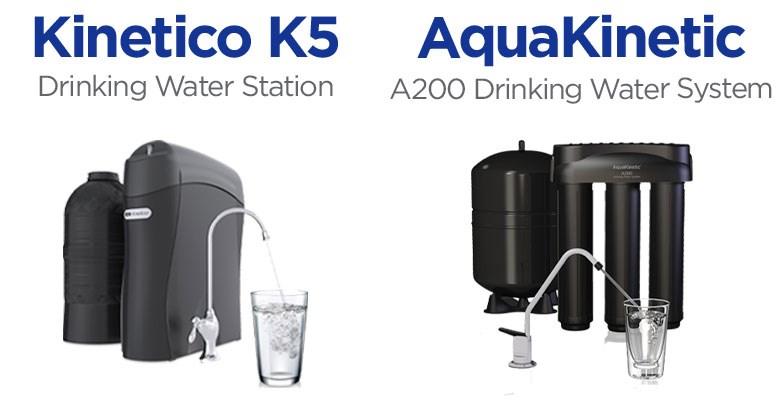What Is An Algal Bloom And How Does It Affect Your Water?
Understanding blue-green algae
What are blue-green algae?
Blue-green algae also referred to as algae blooms or algal blooms, are a slimy green substance that forms a layer of scum on the surface of bodies of water like ponds, lakes, and in some cases the ocean. The scientific term for the substance is cyanobacteria, and it is, in fact, not algae at all. Blue-green algae is a bacteria that most often shows up in summer when temperatures are warmer. Warm weather creates the proper environment for the green slime to grow in warmer waters.
These algae are more than just an eyesore in Lake Erie near Cleveland. The scientific name for these blooms is cyanobacteria, which, despite the name “algae,” are actually bacteria that thrive in warm, nutrient-rich water. These bacteria can cause your water to have a moldy, almost dirty taste.
According to the National Centers for Coastal Ocean Science (NCCOS), the greater Cleveland area, Lake Erie is directly tied to local drinking water sources and recreation. During summer months—typically from July through October—cyanobacterial blooms often increase in the western basin of the lake, fueled by warmer water temperatures and excess phosphorus run-off from agricultural lands, urban areas, and stormwater systems.
These blooms can form visible mats or scum on the water’s surface, producing cyanotoxins that are harmful to humans, pets, and wildlife if ingested or contacted. Local water utilities—including Cleveland’s—position their raw water intakes farther offshore and deeper in the water column to reduce the immediate impact of surface algae and plastics. However, during intense blooms and periods of lower oxygen in deeper water, dissolved metals like manganese may also be released from the lakebed, complicating treatment processes.
Recent articles posted by Great Lakes Now blooms are lasting longer in Lake Erie - some seasons now stretching beyond earlier boundaries—homeowners using lake-influenced systems or private wells near affected waters should remain vigilant. Water testing and advanced treatment technologies, such as activated carbon filtration or membrane systems, can provide added protection against cyanotoxins and improve overall water safety and quality.
Have Your Water Tested To See
If Algae Blooms Affect Your Home
Contact A Kinetico Water Expert Today
Fill out your information below and we’ll have one of our authorized, independent Kinetico dealers contact you to schedule your free in-home water test.
The blue-green algal blooms form in bodies of water due to excess nutrient levels. The primary nutrients that cause the blooms are nitrogen and phosphorus. Naturally-occurring amounts of nitrogen and phosphorus already exist in the environment, but we add more of these nutrients to water sources through practices like fertilizing yards and farmlands. When the nutrients are added to the soil, they are deposited into water by way of the hydrological cycle. Nitrogen and phosphorus are added to our land and seep into the soil. Rain and other natural occurrences cause the nutrients to run into drainage systems and sometimes directly into bodies of water. When they enter into lakes, ponds, rivers and streams, this can cause an oversupply of nitrogen and phosphorus in the bodies of water making the right conditions for algal blooms to form.

When blue-green algae form, they can produce toxins called microcystins. These toxins are the main cause for concern surrounding algal blooms. When toxins are found in the blue-green algae, you have what is called a harmful algal bloom or HAB. When HABs form, the water they contaminate can cause many challenges ranging from economic hardships to health issues.
Blue-green algae, also referred to as algae blooms or algal blooms, are a slimy green substance that forms a layer of scum on the surface of bodies of water like ponds, lakes and in some cases the ocean.
How do blue-green algae affect our water?
There are health risks to anyone or anything that comes in contact with water that contains blue-green algae. The severity depends on what type of bacteria forms. There are more than 80 types of microcystins, some of which cause more harm than others. There is no Environmental Protection Agency (EPA) regulation at present for blue-green algae, so water treatment facilities are not required to treat for it; however, most facilities with water that is regularly affected do treat for algal blooms.
When blue-green algae are in drinking water, consumption and exposure can be problematic for both humans and animals. In extreme cases, household pets, livestock, wildlife and humans can die from overexposure to HAB contamination. This level of severity is not common.

Human health can be affected by blue-green algae contamination by both consumption and contact. When humans consume or come in contact with water that contains harmful bacteria from blue-green algae, they could experience eye and skin irritation, stomach and liver illnesses and sometimes respiratory issues.
When HABs contaminate a body of water, they can also impact local economies. The blooms can harm fish and other wildlife causing a strain on fishing. They can also affect tourism and other industries that rely on water for income. Inevitably the blooms will also increase the costs of water treatment which increases municipal water costs. The economic challenges can only be overcome with widespread change. Though large-scale changes can take time to implement, there are easy ways to reduce the risks of algal blooms in your home.
Schedule a free water test if your water is affected by algal blooms
When blue-green algae are in drinking water, consumption and exposure can be problematic for both humans and animals.
How to protect your home's water from blue-green algae.
If you live in an area that is regularly affected by local health advisories caused by algal blooms, it is in your best interest to consider in-home water treatment. If your home has city water, it is likely that your municipality is treating your water supply. In some cases, drastic changes in weather patterns can make it harder to treat the contaminants. In such situations, cyanobacteria could enter your home’s water and cause problems. The best solution is to install a home water treatment solution that can act as a barrier, protecting your family from contaminated water.
The best solution is a reverse osmosis system. The process of reverse osmosis uses a semipermeable membrane to significantly reduce contaminants from drinking water. The molecules in the cyanobacteria are large, therefore, RO membranes will reject them well. Kinetico offers two reverse osmosis drinking water systems: the K5 Drinking Water Station and the A200.
K5 Drinking Water Station
The K5 Drinking Water Station, Kinetico’s most advanced drinking water system, is a seven-stage reverse osmosis system designed to provide a constant flow of contaminant-free water whenever you need it. In fact, it produces more water faster than any other reverse osmosis system in its class. The K5 is third-party certified and reduces more contaminants than any other similar drinking water system.

AquaKinetic A200 Drinking Water System
The Kinetico A200 is a five-stage reverse osmosis system that offers an economical way to improve the quality of your drinking water. It produces higher-quality water at a faster rate than comparable systems. It is also third-party certified to reduce many contaminants like arsenic, chromium, lead, and more.
Contact a Kinetico dealer today to schedule a water test and find out which system is best for your home.
Contact An Authorized Kinetico Dealer To Schedule A Free Water Test

